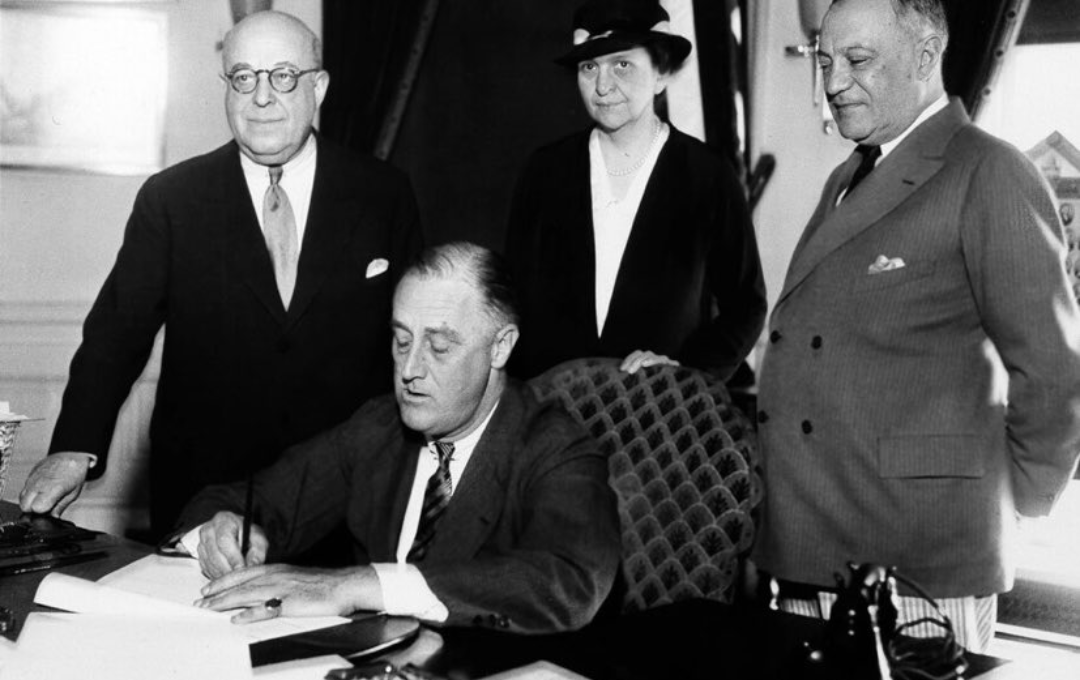Our space is one of constant transformation, and the roles and jobs originally inhabited amidst the shadow of prohibition are now front and center in a burgeoning sector with significant economic and social impact and have to be truly defined for the first time.
Compensation, in all its intricate dimensions, often serves as the sum characteristic of the enigmatic relationship between value and worth in contemporary society. We find ourselves in an era where the relentless pursuit of financial recompense reigns supreme, often overshadowing and creating its own separate cost for notions of intrinsic satisfaction and personal fulfillment. It’s within this context that we’re going to review a small historical timeline of compensation in America, as well as confront and define the natural paradox that is compensation in cannabis.
Labor and remuneration were originally forged by unspoken contracts between individuals and whichever economic system explicitly governed economic existence. It became, and by certain measures still is, not only the market value of a person’s skills and expertise, but also a reflection of societal norms, cultural biases, and unforgiving systemic inequalities. It’s more than currency; it’s a symbol of power, status, and a gauge by which citizens can measure the pursuit of the American Dream. But it wasn’t always like this, and in cannabis, it remains opaque, haphazard, uninformed, and left to chance, which is pure havoc given the stakes.
Compensation, the reward system for work, has undergone a remarkable transformation throughout the history of America. From the early days of agrarian societies to the modern era of technology and globalization, the concept of compensation has evolved in response to societal, economic, and legal changes. We’ll skip the Agrarian Society and Barter System portion because that only exists in small communities and/or amidst three-day festivals in the desert. Suffice it to say, trading crops, livestock, and labor to meet basic survival needs hasn’t been our focus or our jam for some time.

In the late 19th and early 20th centuries, workers faced inhumane labor conditions: long hours, low wages, and even more unsafe environments. Enter labor unions and the labor movement, a fight for fair wages, improved working conditions, and workers’ rights that persist today utilizing the same tools: strikes, protests, and negotiations playing the pivotal role in further defining the contours of fair compensation. With the economic calamity of the Great Depression and then the emergence of the New Deal, FDR created reforms, including landmark legislation via the Fair Labor Standards Act (FLSA) in 1938, establishing what is still today the federal minimum wage, maximum working hours, and overtime pay, a first government-backed standard. Post-WWII saw the economic equivalent of the Pax-Americana in terms of economic expansion and prosperity. Flush, employers began to offer additional benefits beyond wages to attract and retain talent, an era that witnessed the introduction of employer-sponsored healthcare, retirement plans, paid vacation, and other fringe benefits. Today, we simply refer to this as “the package.”
The latter half of the 20th century saw a surge in social movement advocacy, culminating in the Civil Rights Act of 1964 prohibiting pay discrimination based on oracle, color, religion, sex, national origin, etc. Despite progress, the gender pay gap remains a persistent issue. Just in the last few decades, compensation practices have become far more diverse and complex: performance-based pay, such as bonuses and stock options, gained prominence as organizations sought to align employee rewards with individual and organizational performance.
The concept of total rewards emerged, encompassing a broader range of benefits, recognition programs, work-life balance initiatives, and flexible work arrangements.
With all this as a backdrop, it should be rather plausible and straightforward that compensation in cannabis is a foregone conclusion, a simple extension of a preceding legacy of trial and error, absent the abuse and careening towards a contemporary viewpoint. Unfortunately, it’s only half built at the moment.

Cannabis as a space is no longer illegal but still faces a transparency issue, and not because it aims to be opaque. Our space is one of constant transformation, and the roles and jobs originally inhabited amidst the shadow of prohibition are now front and center in a burgeoning sector with significant economic and social impact and have to be truly defined for the first time. Because it was, and still is, illicit, the nature of our trade early on thrust many workers into scenarios that harken back to our inception stage as a nation: low wages, a lack of legal protections, and limited access to benefits.
The birth of the regulated cannabis market in the U.S. brought compensation practices for the newly minted frameworks for licensed producers and dispensaries, offering more structured employment opportunities with formal contracts, wages, and benefits, but that is not the same as having compensation standards. The proof of the ‘practice vs. standards’ dichotomy is hard to pin down unless you have a large lens on cannabis across the country, which most participants don’t because their size relegates them to hyper-local, hyper-regional inputs. The wage disparities and market variations are extremely apparent, with geographical location, job role, company size, and experience morphing between mature states and emerging markets. Usually, roles have a national/global consensus with varying degrees of input; cannabis does not, and it’s one of the primary reasons we at FlowerHire Senior Advisors have become the du jour leaders in analysis.
As the market expands, specialized roles have emerged, from laboratory technicians, compliance officers, marketing professionals, extraction wizards, maintenance managers, etc. Compensation in specialized roles in past and similar industry iterations reflects the expertise expectations and unique demands of a position. But what if the skill and role themselves are not too long in their actual places? What if unsuspecting and unknowing market prices compensate from a place of intuition rather than illustration? What if the market simply regurgitates what has come before it compensation wise instead of asking where it should go?
Let’s try for a change to build something that the employee values versus what we as a business think they value. The product and outcome create disparities, and given that compensation is your largest investment (note we say investment, not expense), and also given the fact that every cannabis company in America can’t have an iota of waste, this is a conversation and process that needs guard rails.
Thankfully, we keep our data fresh, our perspective mobile, and our sights on the future vigilant. If any of the above resonates, we’d love to discuss how we continue to build the first defining compensation tool for our slice of the economy.
Curious to learn more? Email me: Mike@flowerhire.com, all are welcome.

Mike Siebold is a strategic advisor and investor to several cannabis teams domestically. His exposure to the hiring demand and movement of people within the cannabis industry gives him a unique perspective on the prospects and viability of players across the entire ecosystem.


